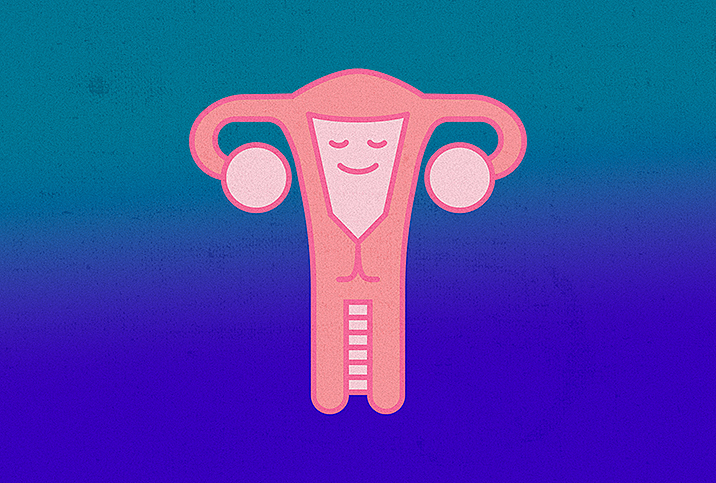Should Employers Offer Paid Menstrual Leave?

The idea of paid menstrual leave for people with painful periods, or dysmenorrhea is controversial. But too many women suffer in silence or take unpaid work days, resulting in less income.
Some countries are changing how they handle painful periods. Is it time the U.S. did the same?
What is paid menstrual leave, and why does it matter?
In 2022, Spain became the first European country to pass a law enforcing three days of paid menstrual leave per month for people with extreme period pain. The bill indicates changing attitudes toward menstruation and its impact on the body.
When period pain "cannot be solved medically, we believe that it is very sensible that there is a temporary disability associated with this issue," Angela Rodriguez, the country's secretary of state, told a Spanish newspaper.
Is it time the U.S. introduced a similar bill? Is it time to ensure that everyone with severe period pain receives paid menstrual leave?
Roughly 45 percent of U.S. workers support the idea of menstrual leave, while another 16.3 percent would support it if certain conditions were first met, according to a 2019 report.
Support seems to be on the rise. About 78 percent of workers support the notion of paid menstrual leave, a 2023 Resume Builders survey indicated.
Interestingly, there was no notable difference in opinion between male and female respondents. The same survey found that paid menstrual leave could lead to more women applying for a job position.
Why do people believe paid menstrual leave is needed?
Periods can be debilitating for many women, especially those with chronic health conditions such as endometriosis and uterine fibroids. Menstrual pain ranges in severity between people.
For some people, periods can bring a dull ache that goes away after a few painkillers; for others, it can be almost impossible to sit up, let alone work. People with conditions such as endometriosis can experience this kind of severe pain each cycle.
"Women, trans and nonbinary people are forced to work under painful and deeply uncomfortable conditions every month for days, a week and sometimes longer," said Kim Crowder, founder of Kim Crowder Consulting, in Indianapolis.
Crowder struggled with fibroids and a cyst, both of which impacted her menstrual cycle. Luckily, a leader at her previous job understood and offered paid leave. She is now a vocal advocate for paid menstrual leave.
"The expectation is that they are able to focus when their bodies are going through a regular process each month without actively creating space for this. Legal leave is on the table in other countries, which means the U.S. can implement it, too," Crowder said.
Paid leave can help those with painful periods experience an income boost and improve a company's work environment, productivity and employee retention.
While people know of maternity and paternity leave, or even sabbaticals, this type of medical leave for women isn't generally considered. But it's important, especially when women have chronic pain due to untreatable conditions related to menstruation.
"These types of issues are too often overlooked. Workplaces can lead in providing space for the full humanity and experiences of all their team members," Crowder said.
Menstruating can take its toll on the body and the mind—and for some women, it can make sitting down to work practically impossible. Many will suffer through a long day at the desk, while others take unpaid sick leave each month.
In shift work, this can contribute to period poverty, the notion that people who menstruate are financially poorer than their male counterparts. Why? Society doesn't have protections in place for people with severe menstrual symptoms.
What would paid menstrual leave look like in practice?
Many workplaces already offer paid menstrual leave. In South Korea, women have been able to take one day of paid time off per month since 1953. Unfortunately, women face pressure not to take time off when they work in male-dominated fields, according to a 2023 Asia Society report.
Japan, China and India also offer period leave, according to CNN Business. However, women don't always feel comfortable taking the time they need.
"Menstrual health should be treated the same as any other illness, where employees are able to take time off sick if they are unwell," said Adam Butler, a workplace solutions expert and CEO of London-based Officeology, a business productivity consulting firm.
Butler thinks it is time employers embrace paid menstrual leave. He has initiated such a program at his office.
"Offering paid menstrual leave for workers, particularly those who suffer with endometriosis or the effects of menopause, is a step in the right direction when it comes to recognizing the importance of women's health," Butler said.
Airship Interactive, a gaming design company in Lancashire, England, instated paid menstrual leave—and it's working.
"We offer unlimited leave to those who suffer from menstrual illnesses and menopause and have seen an increase in productivity, morale and a decrease in absenteeism," said Jenny Moseley, Airship Interactive's marketing manager. "The implementation of our menstrual leave system has been a great success. Employees have reported feeling more supported and appreciated, which has led to a more positive work environment."
When employees don't have to put on a brave face or try to maintain a sense of productivity even when they are feeling terrible but have the opportunity to recuperate in private, that can improve the workplace environment and company culture.
"This policy has created a culture of understanding and acceptance and has allowed our employees to take the time they need to manage their menstrual cycle without fear of judgment or repercussions," Moseley said.
The perks haven't ended there. There are unexpected benefits for companies that offer menstrual leave.
"We have also seen an increase in productivity and engagement, with employees feeling more comfortable and confident in their ability to perform, as well as an increase in female applicants to our open roles here as they feel more supported as a woman in games knowing we have policies like this in place," Moseley said.
"Before I was treated, I used to pass out because of the menstrual pain, and in Indonesia, where I'm from, paid menstrual leave is part of the labor law," said Rebecca Leppard, founder of Upgrading Women in the U.K.
Leppard has endometriosis.
"When I moved to the U.K. and built my own company, it was a no-brainer to include paid menstrual leave as part of the company's policy. It has given us 100 percent employee satisfaction and retention," Leppard said.
Is menstrual leave the answer? It's complicated
"Talking about the impact of menstrual and hormonal health in the workplace is essential," said Maria Carmen Punzi, a Ph.D. candidate at Rotterdam School of Management at Erasmus University in Rotterdam, Netherlands. "However, I don't think that a standalone menstrual leave policy can be the solution."
For one thing, every person has their own unique experience when it comes to menstruation.
"A one-size-fits-all approach isn't the most effective approach," Punzi said.
Menstrual leave programs might make people with periods less likely to seek medical help for severe period pain, Punzi said.
"The implementation of menstrual leave risks normalizing invalidating menstrual pain—which should always be discussed and addressed by a medical professional—and would require employees to disclose the fact that they are menstruating," Punzi said.
Not everyone may be comfortable sharing their period status or medical issues.
"There may be instances where employees do not wish to disclose details of their menstrual health to their employer; for example, for fear of being perceived differently," Punzi said.
Instead of days of menstrual leave, Punzi advocates for education and awareness for all employees, along with flexible working policies so people can take menstrual leave more discreetly.
While there are details to be worked out, paid leave for people with painful periods can help women and their families experience an income boost and improve a company's work environment, productivity and employee retention.




















